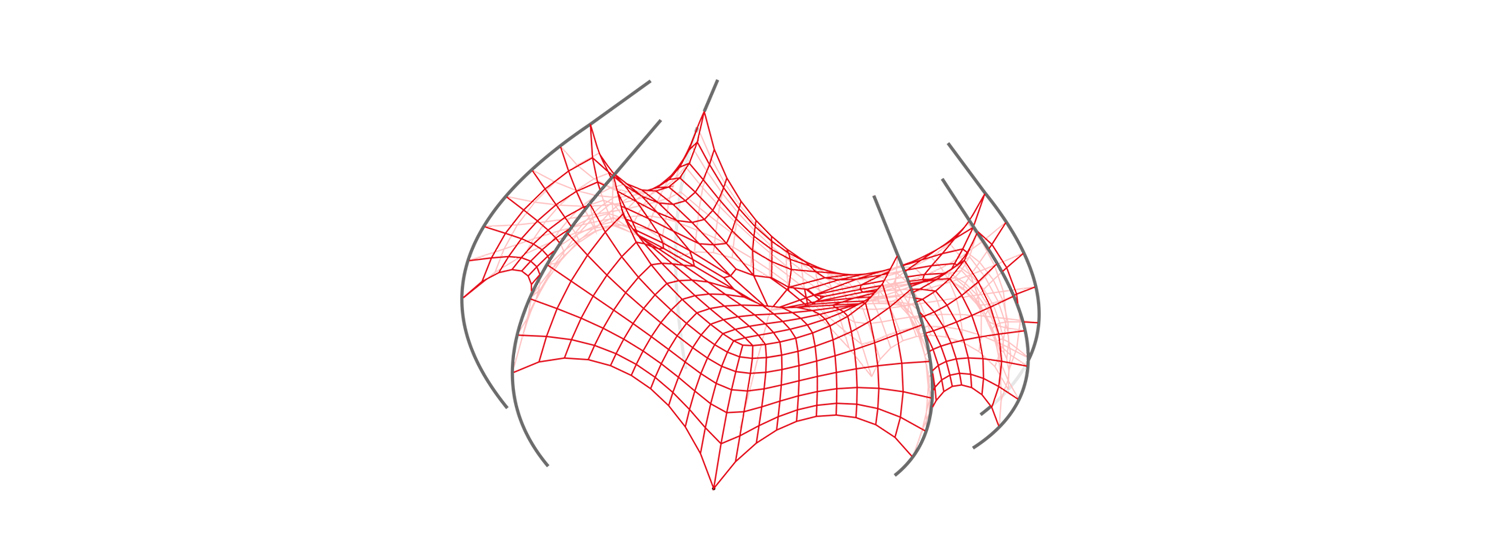|
Form-driven design of bending-active tensile structures in architecture |
L. Boulic 2016 - 2019 |

Resulting from the reciprocal interaction of slender beams, which are actively bent, and cables or membranes, which are pre-stressed, bending-active tensile structures attract growing interest due to their various qualities. These structures have expressive curved shapes, are lightweight and can be assembled quickly, thus allowing the construction of innovative small and medium-scale structures such as temporary pavilions. Their equilibrium geometry, however, is complex and difficult to predict. The form-finding methods currently available for the design of bending-active tensile structures generally limit the designer's influence on the final equilibrium geometry and make the design process less intentional.In order to overcome this restriction and achieve seamless integration of architectural and structural design, this research introduces a novel approach to the design of bending-active tensile structures in architecture. The proposed approach allows to define the bending-active beams directly in their equilibrium geometry thus providing the designer explicit control on the overall geometry of the bending-active tensile structures. This is made possible by breaking up the complex problem of form-finding bending-active tensile structures into simpler sub-problems, and successively addressing the equilibrium of the bending-active beams and that of the pre-stressed cables or cable nets. The control of the overall geometry of the bending-active tensile structures is achieved with a twofold strategy. On the one hand, through the differentiation, along the beams' axis, of their bending stiffness; on the other hand, through the control of the forces applied on the beams' axis via the pre-stressed restraining cables. In the present work, a novel structural model of slender beams is first defined based on a simplified mechanical model and the use of form and force diagrams. This structural model facilitates the understanding of the mechanisms involved in the static equilibrium of a bending-active beam in 2D space. It thus makes it possible to control its static equilibrium, particularly from a geometric standpoint. Moreover, a form-driven design approach is formulated and its different procedures are elaborated. In particular, the equilibrium of the bending-active beams in their desired equilibrium geometry is analysed by means of the introduced structural model, and several specific graphical and numerical methods are developed to address the equilibrium of the cables and cable nets connected to them. Finally, the potential of the approach is demonstrated in a real architectural context by the design of a bending-active tensile structure that acts as a sun-shading system for the glazed facade of an office building.
last modified 4.8.2020